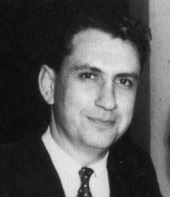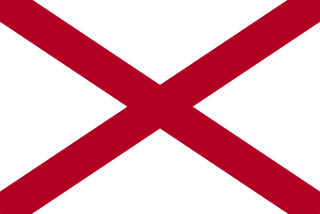
George Corley Wallace Jr. was the 45th Governor of Alabama, a position he occupied for four terms, during which he promoted "low-grade industrial development, low taxes, and trade schools". He sought the United States presidency as a Democrat three times, and once as an American Independent Party candidate, unsuccessfully each time. He is best remembered for his staunch segregationist and populist views. Wallace was known as "the most dangerous racist in America" and notoriously opposed desegregation and supported the policies of "Jim Crow" during the Civil Rights Movement, declaring in his 1963 inaugural address that he stood for "segregation now, segregation tomorrow, segregation forever".

James Elisha Folsom Jr. is an American politician who was the 50th Governor of Alabama from April 22, 1993 to January 16, 1995. He has also served as Lieutenant Governor of Alabama on two separate occasions. He is a member of the Democratic Party.

The New York gubernatorial election of 2006 took place on November 7, 2006 to elect the governor and lieutenant governor of New York, concurrently with elections to the United States Senate in other states and elections to the United States House of Representatives and various state and local elections. Eliot Spitzer was elected, succeeding Governor George Pataki, the three-term incumbent, who did not run for a fourth term.
William Joseph Baxley II, is an American Democratic politician and attorney from Dothan, Alabama.

John Malcolm Patterson is an American politician who served one term as the 44th Governor of the U.S. state of Alabama from 1959 to 1963. A staunch segregationist, he was his state's attorney general from 1955 to 1959. His turbulent tenure as governor was roiled by numerous civil rights protests and a long-running extramarital affair with Tina Sawyer, a mother-of-two who would eventually become his third wife.
George Corley Wallace III, generally known as George Wallace Jr., is an American politician from the U.S. state of Alabama.

United States gubernatorial elections were held on November 2, 2010 in 37 states and two territories. As in most midterm elections, the party controlling the White House lost ground. Democrats did take five governorships from the Republicans, and Republicans took 11 governorships from the Democrats. An independent won one governorship previously held by a Republican. A Republican won one governorship previously held by an independent. Republicans held a majority of governorships for the first time since before the 2006 elections. One state, Louisiana, had no election for governor, but did feature a special election for lieutenant governor.

The 1994 Alabama gubernatorial election was held on 8 November 1994 to select the governor of the state of Alabama. The election saw Republican Fob James defeat Democratic incumbent Governor Jim Folsom Jr. in an upset.

The Alabama gubernatorial election of 1970 was marked by a competitive Democratic primary battle between incumbent moderate Governor Albert Brewer and segregationist former Governor and 1968 independent presidential candidate George Wallace. The Alabama Constitution was amended in 1968, allowing a governor to serve two consecutive terms.

The Alabama gubernatorial election of 1982 included the last campaign and final electoral victory of George Wallace. The election occurred on November 2, 1982. Incumbent Governor Fob James declined to run for a second term, allowing for an open election in 1982. In the Democratic primary, Wallace received challenges from Lieutenant Governor George McMillan, Speaker of the State House Joe McCorquodale, Jr., former Governor Jim Folsom, and Reuben McKinley. Because Wallace did not receive a majority of the votes, he advanced to a run-off with McMillan and then narrowly won the Democratic nomination. Montgomery Mayor Emory Folmar went unchallenged for the Republican nomination.

The Arkansas gubernatorial election of November 8, 1966 was the first time since Reconstruction that a member of the Republican Party was elected governor.

The 1986 Alabama gubernatorial election saw the election of Republican H. Guy Hunt over Democrat Bill Baxley. In state politics, this election is largely seen as a realigning election since Hunt was the first Republican to be elected Governor since Reconstruction. In March 1986, incumbent George Wallace announced that he would not seek a fifth term as governor, ending an era in Alabama politics.

The 1962 Alabama gubernatorial election took place on November 6, 1962. Incumbent Democrat John Malcolm Patterson was term limited and could not seek a second consecutive term.
Elections for state and federal offices for the 2010 election cycle in Connecticut were held on Tuesday, November 2, 2010. Any necessary primary elections for the Republican and Democratic parties were held on Tuesday, August 10, 2010.

The 1980 United States Senate election in Pennsylvania was held on November 4, 1980. Incumbent Republican U.S. Senator Richard Schweiker decided to retire, instead of seeking a third term. Republican nominee Arlen Specter won the open seat, defeating Democratic nominee Peter F. Flaherty.

The 1978 Alabama gubernatorial election took place on November 7, 1978, to elect the Governor of Alabama. Incumbent Democratic Governor George Wallace did not run for re-election. Fob James, a businessman who had switched from the Republican Party to the Democratic Party and campaigned as a "born-again Democrat", won the Democratic primary in an upset over Attorney General Bill Baxley. He went on to defeat Guy Hunt in a landslide in the general election. Incumbent Democrat George Wallace was term limited and could not seek a third consecutive term.
A general election will be held in the U.S. state of Connecticut on November 4, 2014. All of Connecticut's executive officers are up for election as well as all of Connecticut's five seats in the United States House of Representatives. Primary elections were held on August 26, 2014.

The Alabama gubernatorial election of 1966 took place on November 8, 1966, and saw the election of Lurleen Wallace as Governor over U.S. Representative James D. Martin. Incumbent Democrat George Wallace was term limited and could not seek a second consecutive term.

The 1954 Alabama gubernatorial election took place on November 2, 1954, to elect the Governor of Alabama. Incumbent Democrat Gordon Persons was term-limited, and could not seek a second consecutive term.



















